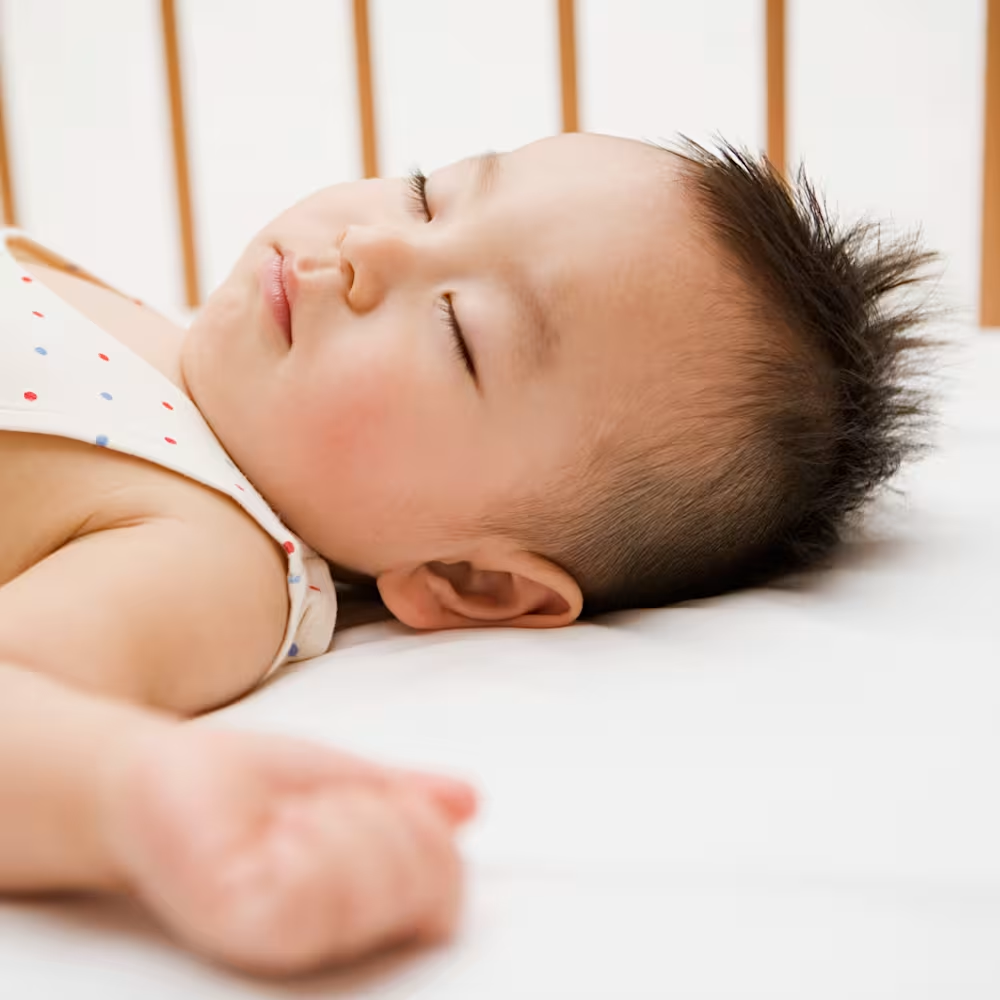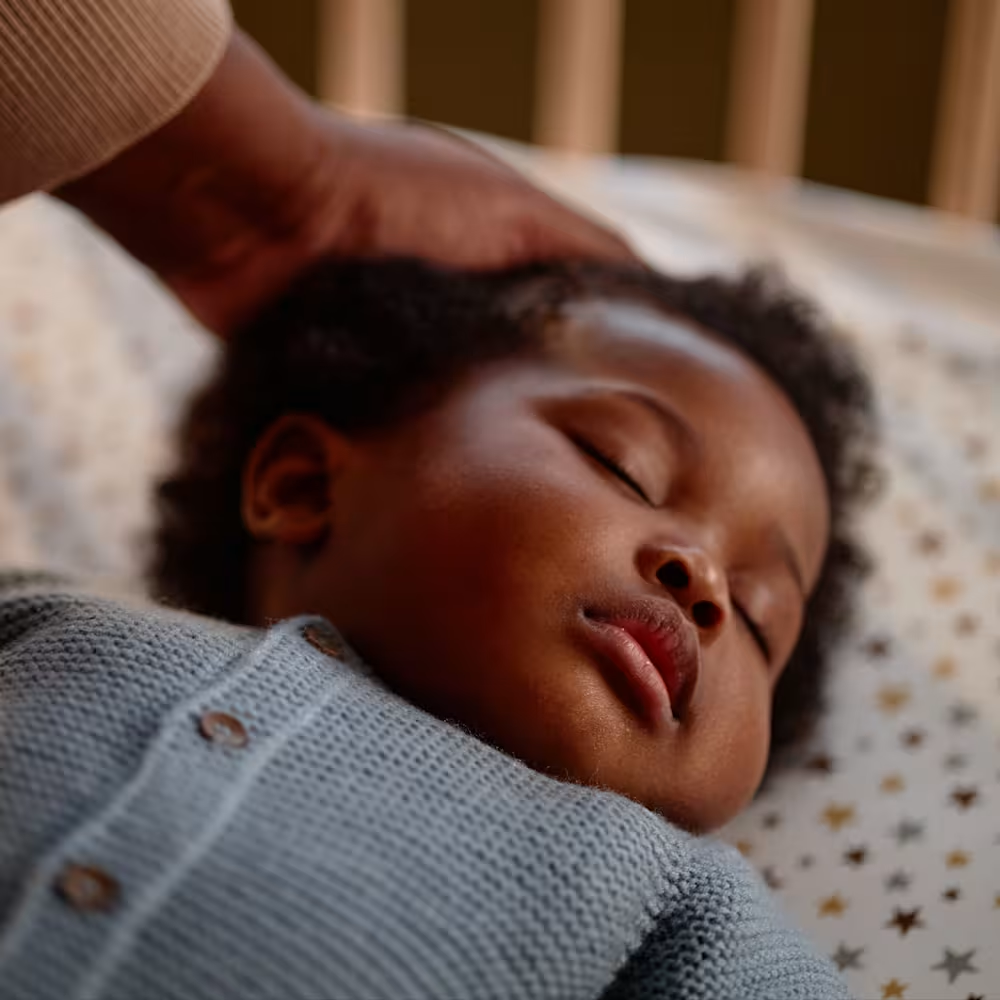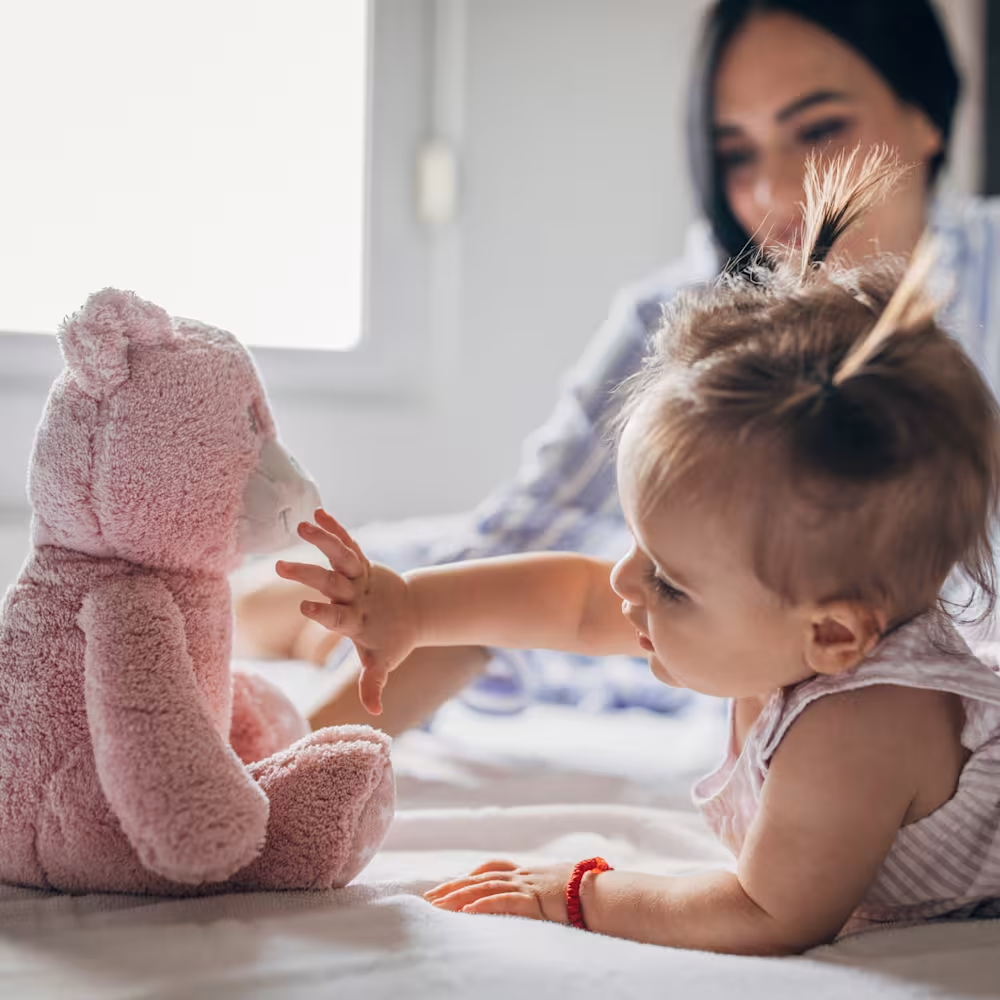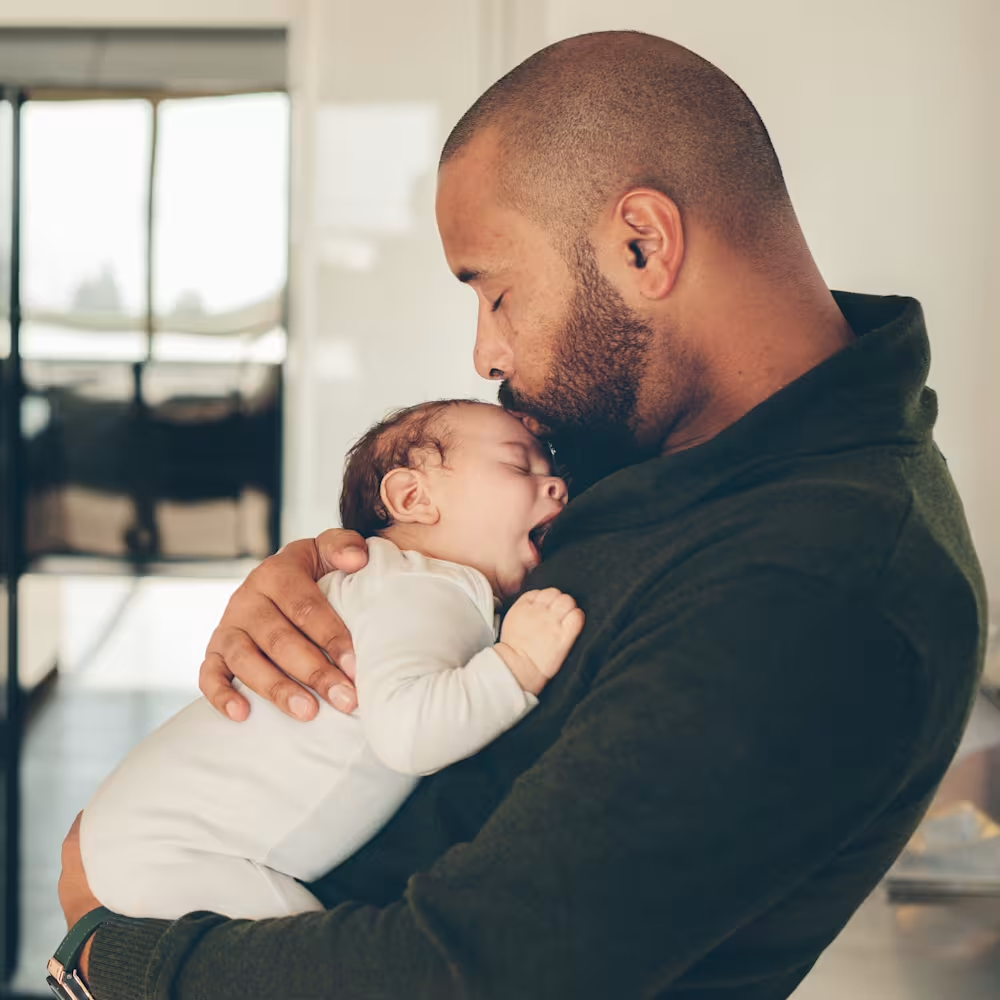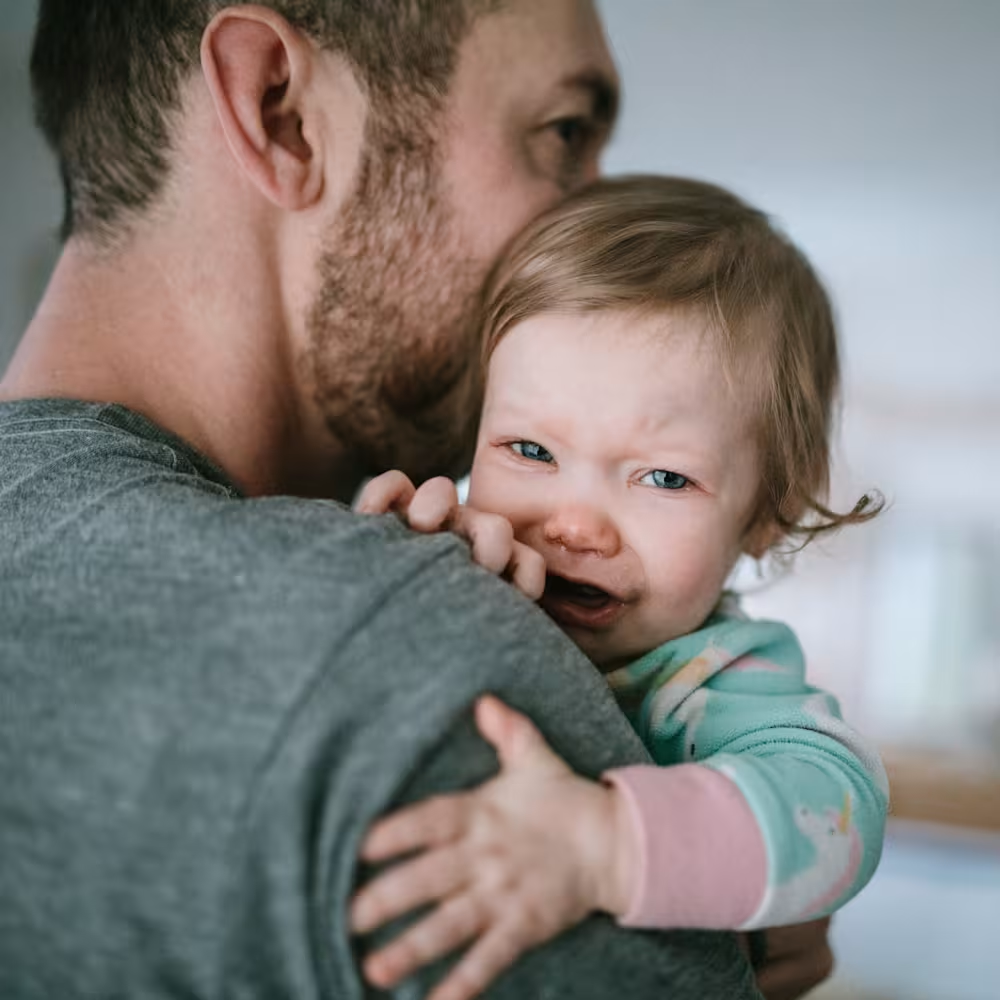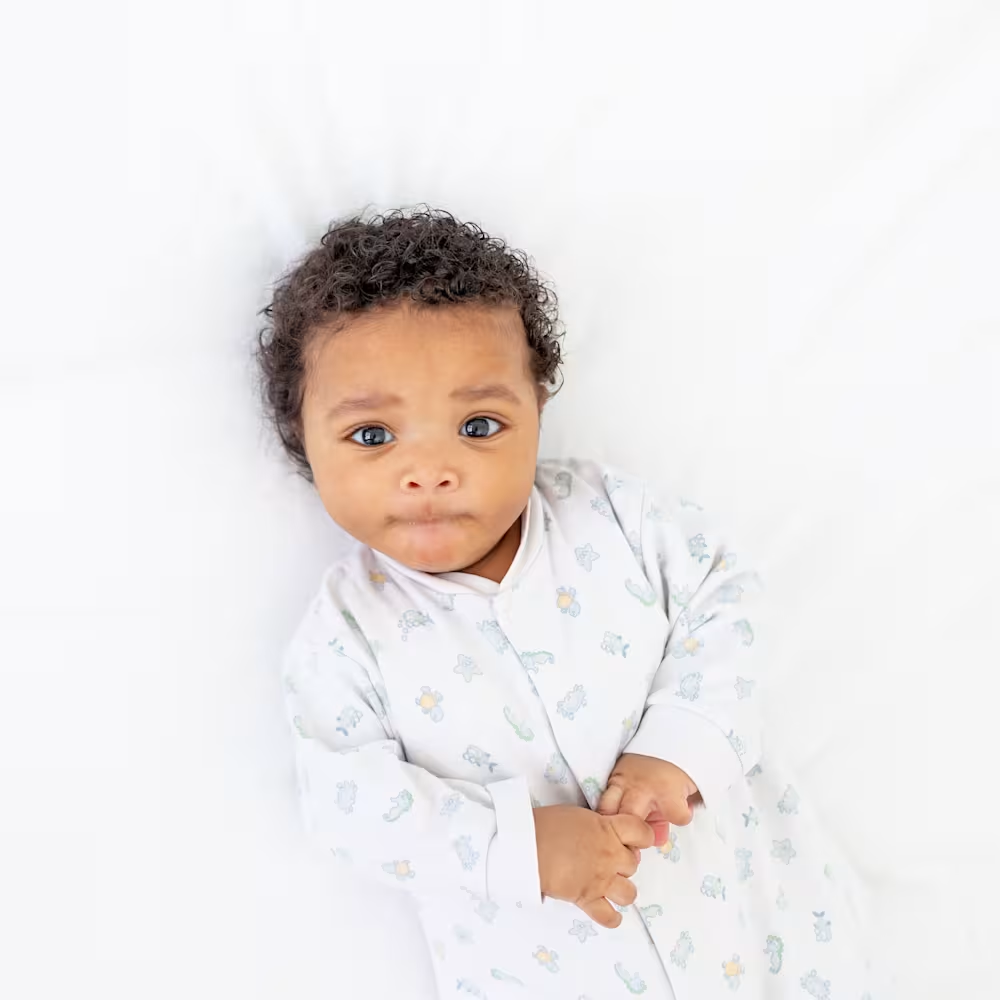What is the best temperature for your baby’s room?
Updated Oct 16, 2025
Up-to-date
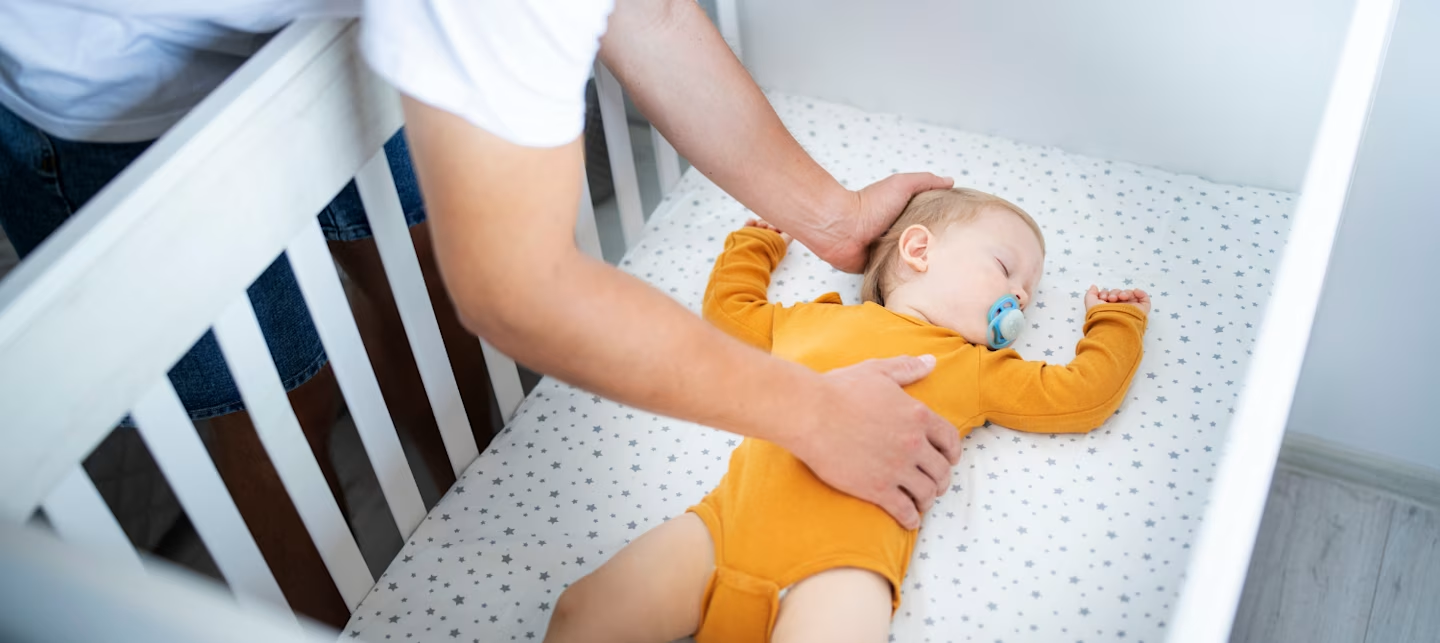
You’ve picked the cutest PJ sets, rocked with precision, practiced your soft singing voice, and mastered the binky bounce — but if your baby’s room feels like the arctic or a tropical beach resort, even your best bedtime efforts might fall flat. While babies around the world sleep in a wide range of conditions, one thing remains clear: overheating is the biggest concern when it comes to sleep safety. So instead of aiming for a perfect number, think in terms of optimal comfort and safety.
In this article, we’ll help you find that perfect middle ground. From explaining why temperature matters to showing you how to monitor and adjust your baby’s sleep space, we’re here to make sure your lullaby skills don’t go to waste just because the thermostat missed the memo.
Table of Contents
Why baby room temperature matters
Newborns are basically tiny space heaters with unpredictable settings — and no thermostats. Unlike adults, they can’t regulate their body temperature efficiently, which means they’re more sensitive to temperature swings []. So they rely on you to keep things just right. A room that’s too hot or too cold can lead to poor sleep and overheating risks.
Your baby’s ability to regulate their temperature will get better over time, but in those early months, maintaining a consistent and comfortable sleep environment can make a difference.
Ideal sleeping temperature for babies
The ideal room temperature for babies is usually between 68°F and 72°F (20°C to 22°C) [].
Think: a mild spring morning with no wind chill and no blazing sun. This range helps babies sleep comfortably and reduces the risk of sudden infant death syndrome (SIDS), which is more likely to occur when a baby overheats [].
That said, we know this isn’t always realistic, especially if you live in a place with extreme temperatures or a home with older heating and cooling systems. Many houses (especially in summer or winter) drift outside this range despite our best efforts. Instead of stressing over a perfect number, aim to make your baby’s sleep space feel as comfortable and safe as possible. Using a fan for air circulation and dressing your baby in seasonally appropriate pajamas can achieve this.
How to measure and monitor your baby’s room temperature
There’s no need to guess the temperature of your baby’s sleep environment. Instead, let a room thermometer do the work for you.
Many baby gadgets these days can multitask. You’ll find thermometers built into humidifiers, baby monitors, white noise machines, and even some . Some models can track temperature and humidity trends over time, which can be helpful.
If you’re buying a standalone thermometer, look for one with:
Clear digital display
Room temperature alerts
Humidity readings
No bright lights or beeps
That said, an old-school method is perfectly OK. If the room feels chilly enough to make you reach for a hoodie or warm enough to stick to your T-shirt, your baby’s probably feeling it too. Touch the back of their neck or chest to double-check. (Not their hands or feet — those are usually cooler.)
What are the signs baby is too hot or too cold?
Room temperature | Baby’s appearance | Baby’s behaviors |
Too hot | Flushed cheeks Sweaty neck or hairline Hot chest or back | Restlessness Rapid breathing Difficulty settling |
Ideal | Warm chest Normal color Relaxed posture | Steady breathing Easy to soothe Restful sleep |
Too cold | Cool neck and back Pale or bluish skin tone | Frequent wakings Fussiness Difficulty settling |
Dressing your baby according to room temperature
Even if your nursery doesn’t always stay perfectly within the ideal 68°F to 72°F range, you can still create a cozy sleep environment by appropriately. The right layers can help your baby regulate their body temperature when the room fluctuates.
In cooler rooms, layering with long-sleeve sleepers, footed pajamas, or lightweight swaddles can provide extra warmth without causing overheating. When the room is on the warmer side, opt for breathable fabrics like cotton onesies or light muslin sleep sacks to keep your baby cool.
A simple rule of thumb? Dress your baby in one more layer than you would wear to sleep comfortably in the same room.
6 tips for maintaining the ideal room temperature
Tip #1: Use a room thermometer
A simple digital thermometer gives you immediate answers regarding nursery temps. Many baby monitors, humidifiers, and sound machines now include built-in sensors so you can keep an eye on the temperature without lifting a finger (or getting out of bed).
Tip #2: Dress baby in layers
Layering allows you to adjust easily to room changes. Choose breathable fabrics and adjust based on the temperature.
Tip #3: Use blackout curtains or shades
Sun pouring into the nursery during the day can raise the room temperature quickly. Blackout curtains help block heat and light, keeping things cool and .
Tip #4: Use a fan (safely!)
A ceiling or portable fan can improve airflow and reduce the risk of overheating []. But be sure it’s placed safely without loose cords and pointed away from the crib.
Tip #5: Check room temp before you go to sleep
The temperature can shift in the evening, especially in older homes. Do a final check before heading to bed to make sure your baby won’t wake up sweaty or chilly.
Tip #6: Pay attention to your baby’s cues
If your baby seems unusually fussy, wakes more than usual (though they may be waking due to other factors like hunger or sleep associations), feels clammy or too cool to the touch, it might be a sign that the room temperature needs shifting. No gadget can replace the real-time feedback you get from your baby (in addition to your own experience as a parent).
Can the right temperature improve baby sleep?
While it won’t magically turn your baby into a 12-hours-straight sleeper, keeping the room at a comfortable temperature can support longer, more restful sleep. When a baby is too hot or too cold, their body has to work harder to regulate temperature. That extra effort can lead to restlessness and more frequent wake-ups [].
However, it’s completely normal (and healthy!) for babies to wake during the night – especially young babies who need to wake to feed. The right temperature won’t eliminate all wake-ups (no thermostat is that powerful), but it may help your baby settle more easily and stay asleep longer between those developmentally appropriate check-ins. And hey, every extra minute of sleep counts — for both of you.
When to seek professional advice
If your baby often wakes up sweaty, cold, or unusually fussy despite a comfortable room temperature and proper clothing, it’s a good idea to speak with your pediatrician. These signs may point to an underlying issue that goes beyond typical sleep disturbances. Trust your instincts — it never hurts to check and be sure your little one is healthy and comfortable.
Takeaway
Keeping the room at a comfortable temperature supports both your baby’s safety and well-being. Babies can’t regulate their body temperature like adults can, so a nursery that’s too hot or too cold can lead to restless sleep or even increase the risk of SIDS.
The ideal temperature range is between 68°F and 72°F (20°C to 22°C). Sometimes that’s not realistic, depending on where you live or what cooling and heating systems your home has. Opt for dressing your baby appropriately for sleep to keep them as comfortable as possible.
Monitoring your baby’s environment doesn’t have to be complicated. Using a room thermometer, watching your baby’s cues, or being aware of how you feel in the space are all safe yet sustainable options.
Dressing your baby appropriately is key when room temperatures fluctuate. Adding or removing a layer based on the weather can keep your baby sleeping soundly.
Best temperature for baby’s room FAQ
Share article:
Note: The content on this site is for informational purposes only and should not replace medical advice from your doctor, pediatrician, or medical professional. If you have questions or concerns, you should contact a medical professional.
7 Sources
Table of Contents
Share article:
